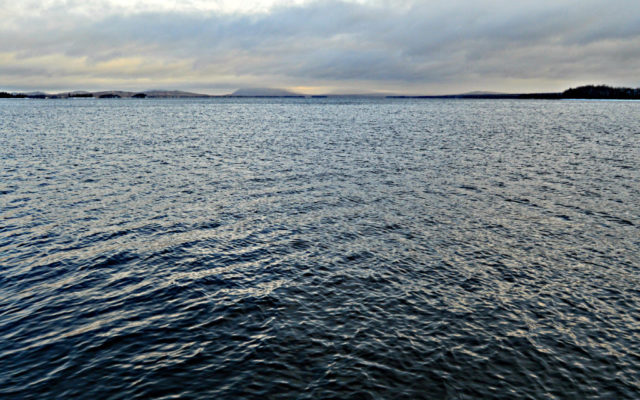
Moosehead Lake fishery update (spring work)
By Tim Obrey, regional fisheries supervisor
Trying to understand smelt population dynamics is one of the most vexing problems we face as fisheries managers. Smelt are the primary forage for our lake trout and salmon. Large brook trout will also feed on smelt. In the winter, our prized gamefish feed almost exclusively on these tiny schooling baitfish. When the smelt are low in abundance, growth for lake trout and salmon declines. If smelt are really low, we might actually see survival of our gamefish decline. It seems lake trout and salmon would rather starve to death than feed on other baitfish species available. Yellow perch and lake chubs must be the piscatorial equivalent of holiday fruitcake…
We saw growth and survival of our lake trout and salmon languish in the 1990s and early 2000s when the smelt just couldn’t rebound from the over-population of lake trout in Moosehead Lake. It took a great purge in 2008-10 to finally thin down the lake trout numbers and restore the smelt population.
For decades we have monitored the smelt population by examining stomach contents from angler caught lake trout and salmon in the winter months. Yes, the fish biologist will clean your fish for you on Moosehead at no extra charge! It is very revealing data, and we can detect strong and weak year-classes of smelt as they become available as forage.
For the past seven years, we have conducted a new study based on  work that was originally performed in the Great Lakes. It involves capturing a sample of out-migrating smelt fry, just after hatching, and expanding the catch to estimate the total production for that tributary. Our work takes place on North Brook in Lily Bay which historically has a smelt run of varying magnitude every year. A plankton net is set in the brook for hatching. We count the captured fry under a microscope and the catch rates are expanded to determine the total out-migration for the day. It can range from just a few smelt to millions per day, and the hatching usually takes place over 2-3 weeks.
The results have been a fascinating rollercoaster ride. In 2020, we had our lowest estimate of recruitment from North Brook at just over 3,000 smelt. That made for some slim pickings for the lake trout and salmon. We had very good news this past spring when we had our highest estimate at over 15.6 million smelt. This group entered the food chain in late summer and will help fatten our gamefish over the next two years. We should see some fat and happy fish over the coming year.
We are always looking for ways to improve our knowledge of what makes this lake tick. We can’t always change the situation and Mother Nature can be fickle, but it does help to know what is coming and why conditions may change. Having a good handle on smelt abundance in relation to our estimates of lake trout and salmon abundance is critical to effectively managing Maine’s largest lake.